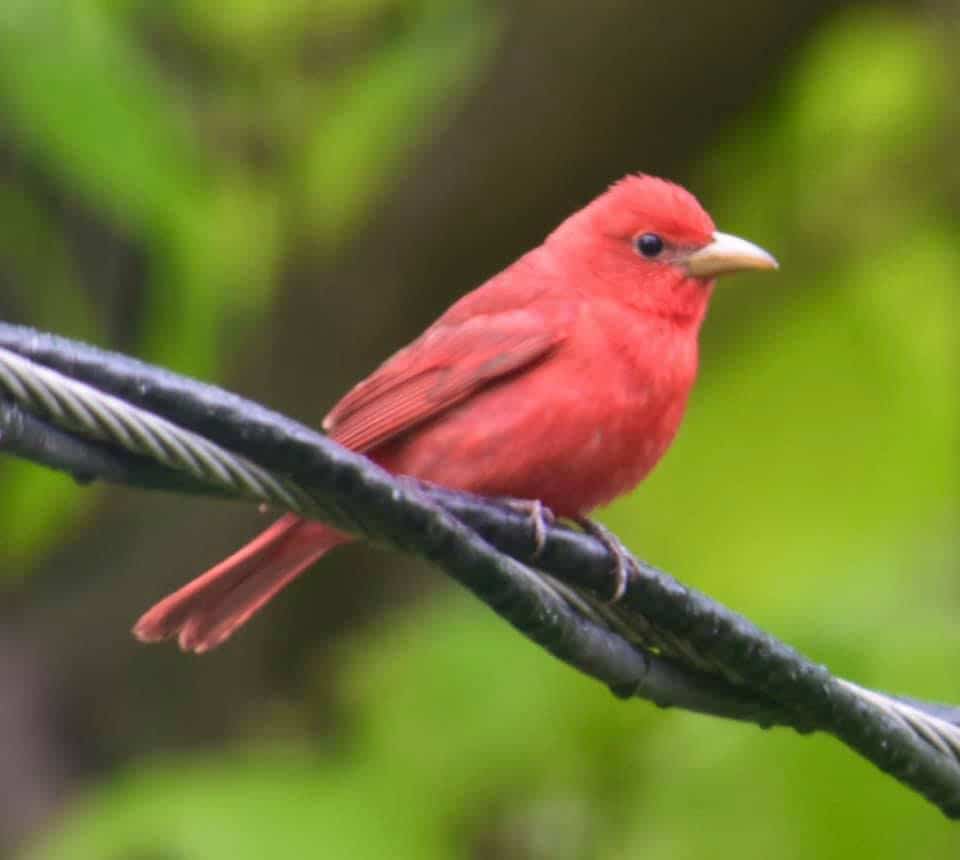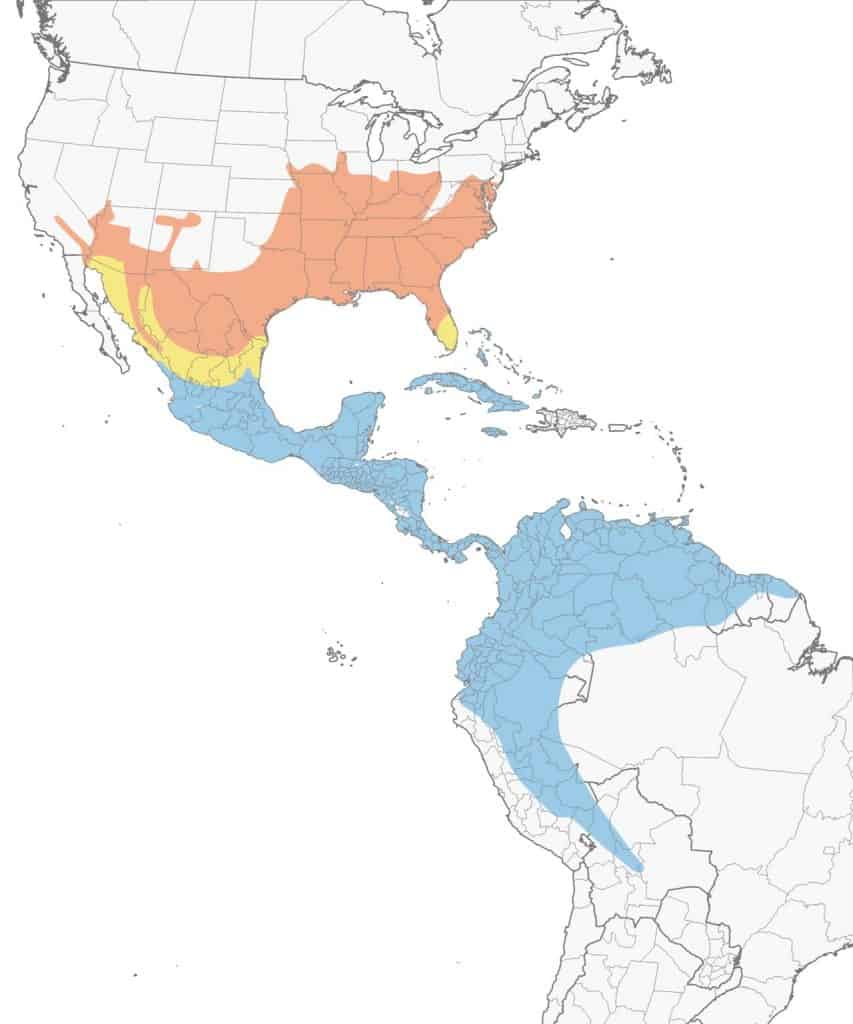
Appearance: The summer tanager is a small bird about 6.5-7″ long, with bright red all over, a long tan beak, a medium-length tail, and no crown. Female and juvenile are yellow.
Diet: Insects, especially bees and wasps. Also dine on spiders, cicadas, beetles, ants, and termites. Fruit including mulberries, pokeweed, citrus, and bananas.
Feeder food: Unlikely to visit a feeder. However, they can be enticed by planting berry trees and shrubs – especially near a forested area.
Habitat: Open forested areas that contain deciduous & pine trees throughout much of south-central and southeastern US.
Nesting: The nest is constructed primarily from dried grasses and herbs into a small cavity and often placed at the fork of tree branches. 1-2 broods/season, 3-4 eggs/brood, incubation is 11-12 days and the young fledge after about 8-12 days. Eggs are pale blue/green with brown spots.
Migration: Summer tanagers are migrators. In the spring they migrate north to breed and raise their young. Then in the fall, they migrate back south for the winter.
Breeding range: Midwest and southern US states including California, Nevada, Arizona, New Mexico, Texas, Oklahoma, Kansas, Iowa, Missouri, Nebraska, Louisiana, Illinois, Indiana, Ohio, Kentucky, Tennessee, Mississippi, Georgia, Alabama, Florida, South Carolina, North Carolina, Virginia, and Pennsylvania.
Winter range: Mexico, the Caribbean islands, Central America, and South America.
Range Map


